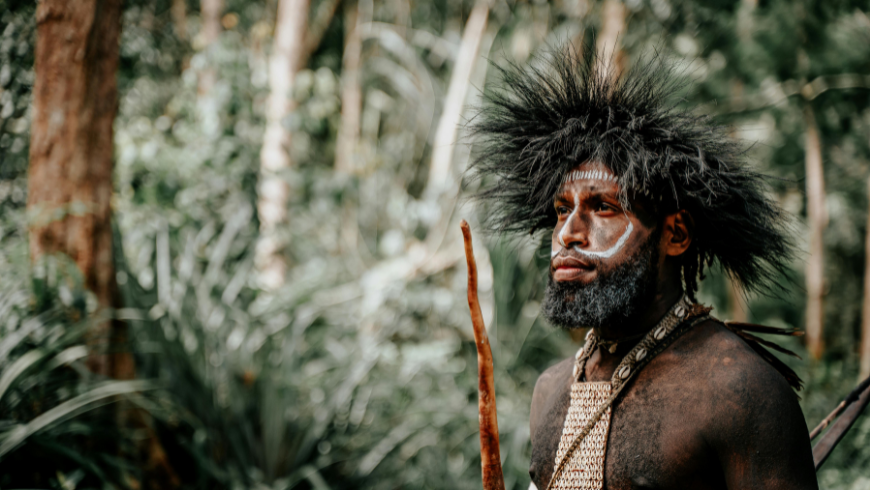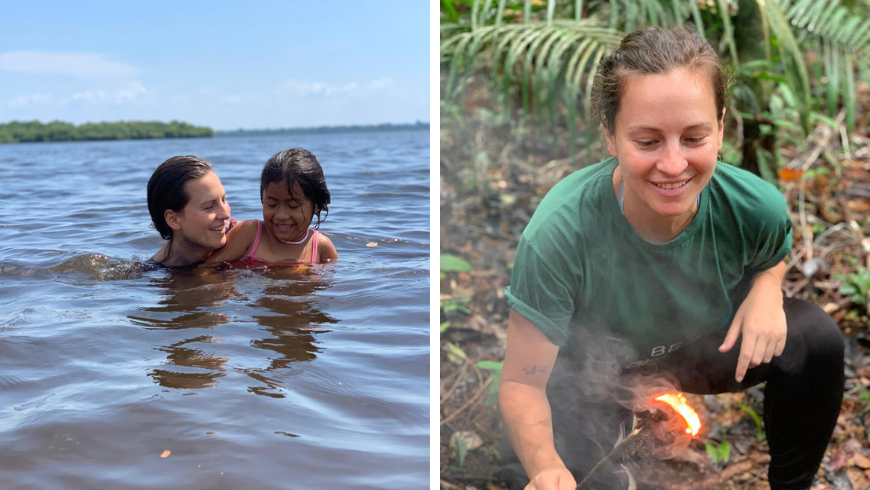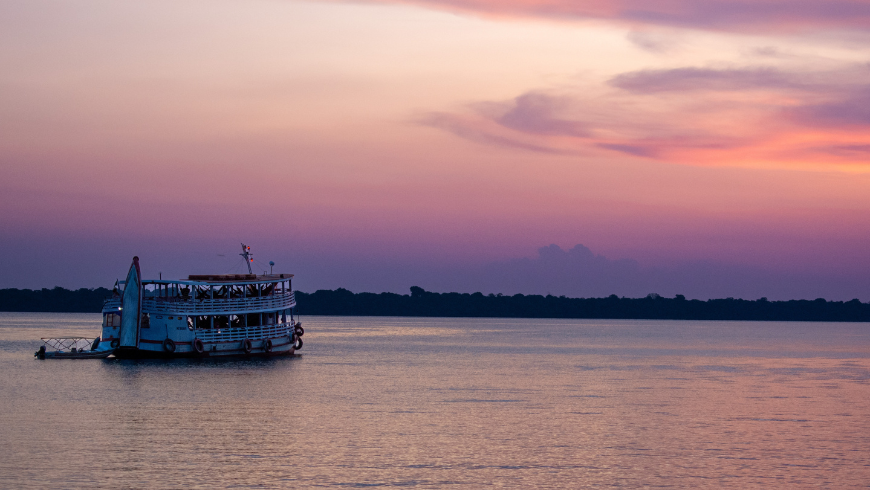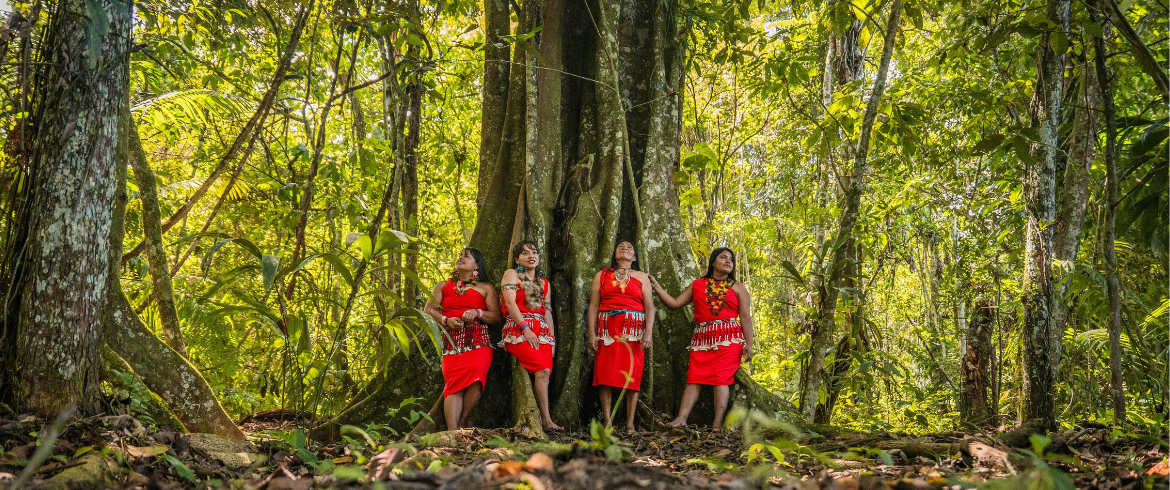Responsible travel can go beyond exploring nature or using eco-friendly transportation — it can also be about connecting with people. To travel consciously means valuing local cultures, protecting the environment, and embracing experiences that transform the way we see the world. We interviewed a traveler who ventured deep into the Amazon rainforest, among rivers and endless green, to live with a Indigenous community that beautifully shows how tradition and sustainability can walk hand in hand.

What comes to mind when you think of Indigenous peoples in the Amazon?
For many, the image is of isolated tribes living deep in the forest, far from modern life. But the truth is far more diverse and inspiring. The Brazilian Amazon is home to over 400 Indigenous groups, with nearly 3 million people and more than 160 distinct languages.
Only about a hundred groups live in voluntary isolation. The rest are vibrant, connected communities balancing tradition with innovation and redefining what it means to live sustainably.
To understand this reality, I spoke with Ana Alberine, a 36-year-old Brazilian who spent one month living in Três Unidos, a small Indigenous community of the Kambeba people, located about 60 km from Manaus. Reaching it is only possible by boat, along the vast rivers that sustain the forest and its people.

5 Lessons from Living with an Indigenous Amazon Community in Brazil
1) To Move at Nature’s Pace
“In the city, we live by the clock. In the forest, life follows the rhythm of nature,” says Ana.
As soon as she arrived, Ana was welcomed with open arms. In the Kambeba language, everyone is “kin.” Within days, she felt part of the family.
What struck her most was the slower pace of life. In Três Unidos, time isn’t divided into hours and deadlines but it flows with the sun, rain, and river. When it rains, activities pause; people wait until the weather clears. Even the school year follows the seasons: during the dry months, classes stop because nearby students can’t reach the village by boat. This shows a real example of how modern society lost the connection with natural and its cycles.
In just a few days, Ana had left behind the city’s rush and tuned into a calmer, more natural rhythm — one guided by the forest itself. A true sustainable travel experience.
2) Growth, Identity, and Balance
The Kambeba people defy stereotypes. While the forest surrounds them, they are not disconnected from modern life. Solar panels provide electricity for cooking, lighting, and even limited Wi-Fi access.
Their leader, known as the tuxaua, is a visionary who founded the community less than 30 years ago. Under his guidance, Três Unidos has flourished — it now has two schools, a health clinic, and a partnership with the Sustainable Amazon Foundation (FAS). Even cruise ships, like the Ibero Star, stop by weekly to purchase local handicrafts, helping sustain the local economy.

Yet, the tuxaua ensures that modern development will never erases their culture. Traditional stories, cuisine, dialect, body paintings (grafismos), and sports like canoeing and archery remain part of daily life. He and the community defend that modernization can happen sustainably — as long as development respects the forest, traditions, and collective well-being.
Their way of life reflects the very principles of the United Nations Sustainable Development Goals, particularly those that promote sustainable communities, responsible consumption, and the protection of life on land (SDGs 11, 12, and 15). In Três Unidos, sustainable development is not just an idea but an everyday practice, where progress and preservation evolve side by side.
“All cultures evolve, and that doesn’t make them less authentic,” Ana reflected.
“Why do we feel free to embrace other cultures, yet expect Indigenous peoples to stay frozen in time?”
3) Empowerment: The Strength of Kambeba Women
Although the tuxaua is the main leader, women are the heart of the community’s economy. They craft beautiful jewelry from forest seeds, weave traditional ornaments, and are active voices in Indigenous movements.
Ana was moved by the number of young women leading initiatives and speaking at social events.
“It’s inspiring to see them so confident, shaping the future while protecting their roots,” she said.
In Três Unidos, empowerment grows from the forest — and from the community’s belief in equality, collaboration, and respect.

4) Sleeping in the Forest: A Lesson from the Tuxaua
One night, the tuxaua invited Ana to sleep in the forest — in a hammock, beneath the stars — to feel what he felt when he first arrived.
“It was one of the best nights of sleep I’ve ever had,” Ana smiled.
That experience made her understand what sustainability truly means: not a concept or a checklist, but a way of being — living in balance with nature, not against it.
5) The Wisdom of the Amazon: Living in Harmony
Ana’s month in Três Unidos revealed that responsible travel can help protect culture, empower local communities, and raise awareness about the Amazon’s importance.
The Kambeba people are living proof that progress and tradition can coexist, showing us that sustainability is about more than environmental protection — it’s about respect, connection, and reciprocity.
The Amazon isn’t just the lungs of the planet. It’s a living classroom, teaching us how humanity and nature can thrive together.

Practical Tips for Responsible Travel in the Amazon
If you dream of visiting the Amazon responsibly, keep in mind:
- Choose community-based tourism projects and Indigenous-led experiences.
- Travel with certified local guides and respect access rules.
- Support artisans and local markets instead of mass-produced souvenirs.
- Reduce waste and use eco-friendly products — everything returns to the forest.
- Most importantly, listen and learn from the people who call the forest home.
Cover image: photo via Canva PRO
